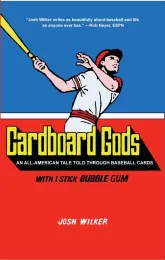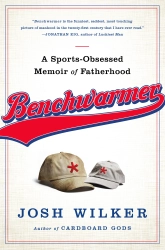
A few things about Gary Nolan as I try to work my way back from the blogging disabled list:
1. My wife is from Cincinnati, and her sports-loving parents have three giant posters of Reds hanging in their house: Johnny Bench, Pete Rose, and Gary Nolan. The Bench and Rose posters are in the same classic and timeless style, big understated black and white head shots from the early 1970s that somehow communicate both youth and immortality. The Nolan poster is of a different, later vintage and seems dated and even a little desperate in the way it blares the name NOLAN in big letters below the action photo of a burly veteran hurler huffing and puffing as he follows through on a pitch.
2. When I was a kid, my shaky understanding of the relative importance of Gary Nolan had its foundation in that last name, Nolan, which was the same as the first name of the most famous pitcher of the era. It was tough to spend any time thinking about Gary Nolan when your mind instantly suggests an alternative, Nolan Ryan.
3. The 1977 series of cards included cartoons on the back that did not have anything to do with the player featured in the card. It seems a little unfair to Gary Nolan that the cartoon on the back of his 1977 card focused on Nolan Ryan. The cartoon shows a frustrated batter walking from the field with a broken bat, the caption reading “Nolan Ryan has pitched four no-hitters in his career.”
4. Nolan Ryan went on to pitch three more no-hitters after this cartoon appeared on Gary Nolan’s card. Gary Nolan, on the other hand, did not add to his total of zero no-hitters after the appearance of this card. In fact, he only won four more games in his injury-hampered career.
5. Gary Nolan recorded all of his 110 career wins with the Cincinnati Reds, though he did pitch briefly in his final season alongside Nolan Ryan on the California Angels, after being traded straight up for a minor league player named Craig Hendrickson.
6. Gary Nolan was not even thirty years old when he called it quits. He had broken into the league as an 18-year-old in 1967 and that season won 14 games while recording a 2.58 ERA with 206 strikeouts. His next stellar season was in 1970, when he won 18 games to help the Reds win the NL pennant, and two years later, when the Reds added another NL championship to their collection, Nolan posted a 15-5 record with a 1.99 ERA. The following two seasons were ruined by injury, as he only pitched in two games in 1973 and none in 1974. He must have begun to wonder if it was over.
7. Nolan Ryan never had to learn a new way to pitch, as far as I know. From the beginning to the end he threw mind-boggling heat. Things were not so simple for Gary Nolan, according to the stats on the back of his 1977 card. The kid who had struck out 206 men in 227 innings in 1967 was long gone after two injury-ruined seasons. But Gary Nolan found a way to come back and be effective. In fact, during 1975 and 1976, while no longer able to blow anyone away, he still found a way to be the pitching anchor of the best team of my lifetime.
8. I don’t think about Gary Nolan when I think of that Reds dynasty. They had arguably the best catcher ever in Johnny Bench, arguably the best second baseman ever in Joe Morgan, and the eventual all-time hits leader in Pete Rose. Then there’s Hall of Fame RBI-machine Tony Perez, multiple all-star team selections Dave Concepcion and Ken Griffey, and budding super-slugger George Foster. Even the least-known of the starting eight, centerfielder Cesar Geronimo, had a barrel of Gold Glove awards to go with his memorably mellifluous name. You might be tempted to think that with a starting eight like that, who needs pitching?
9. In the photo in the dated poster in my in-laws’ house, there’s something of the bulldog in Gary Nolan. He’s not going to saw anyone’s bat in half or throw a no-hitter, let alone seven, but he’s not going to shy away from battle, either. Gary Nolan huffed and puffed and battled his way to more victories than any other Reds pitcher during the team’s glory-drenched two-year reign atop the baseball world. This was nothing new. As Gary Nolan went, so went the Reds, his best years (besides his rookie year) all coinciding with the Reds winning either the NL title or a World Series. Later departures, most notably native son Pete Rose leaving for Philadelphia, surely got more ink as signaling the end of an amazing era in Cincinnati, but in point of fact the team was never the same once Gary Nolan left.






You must be logged in to post a comment.